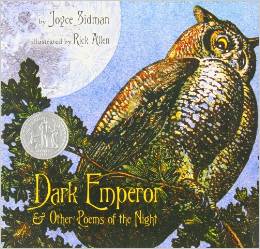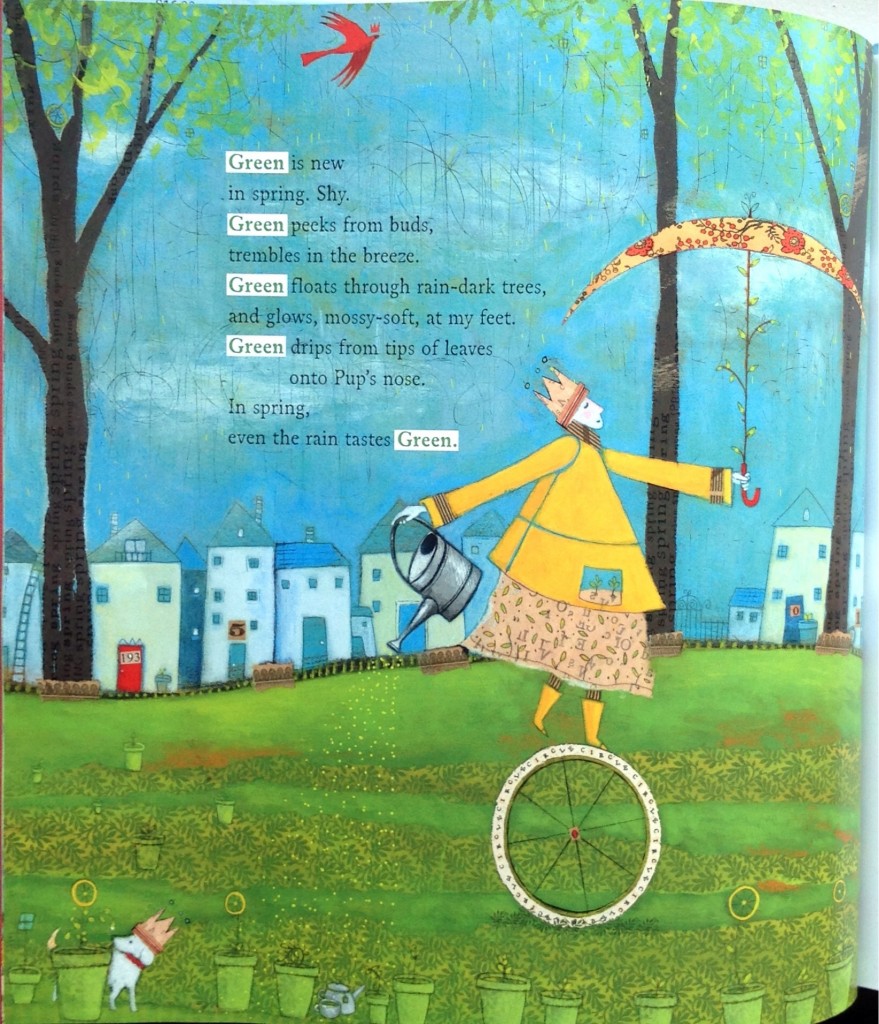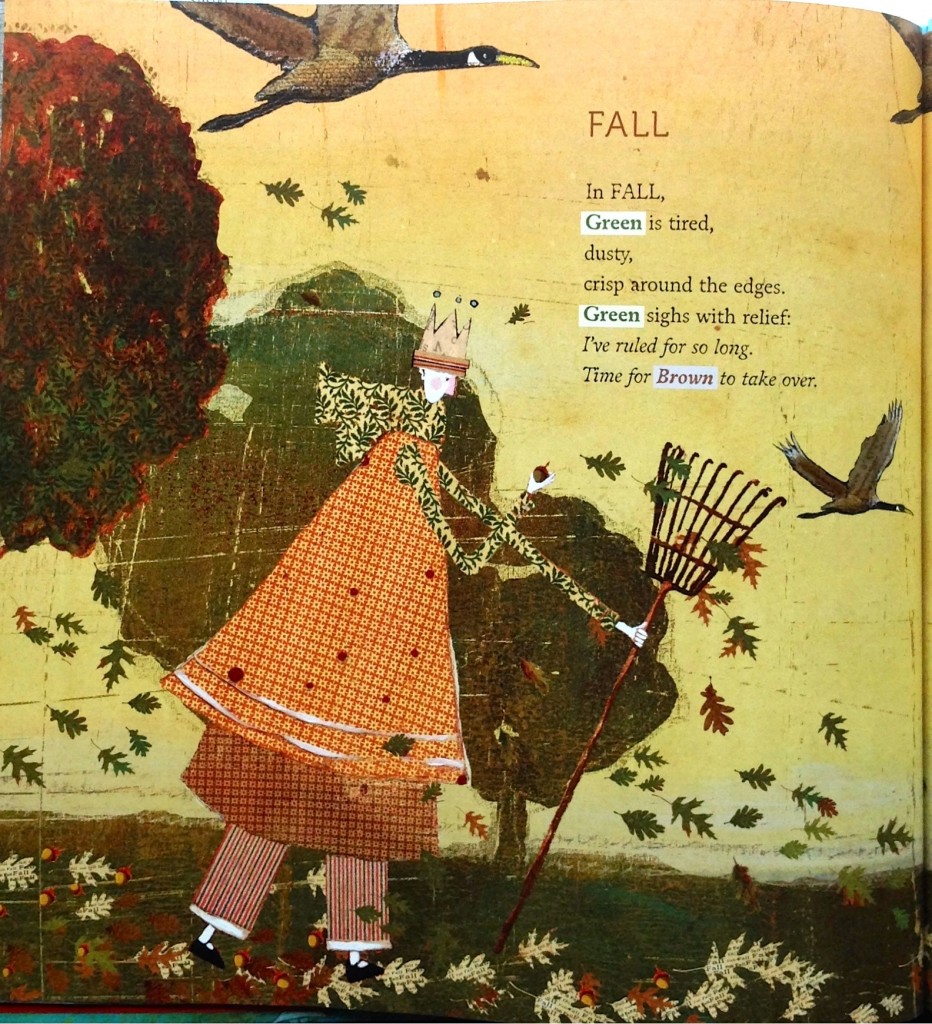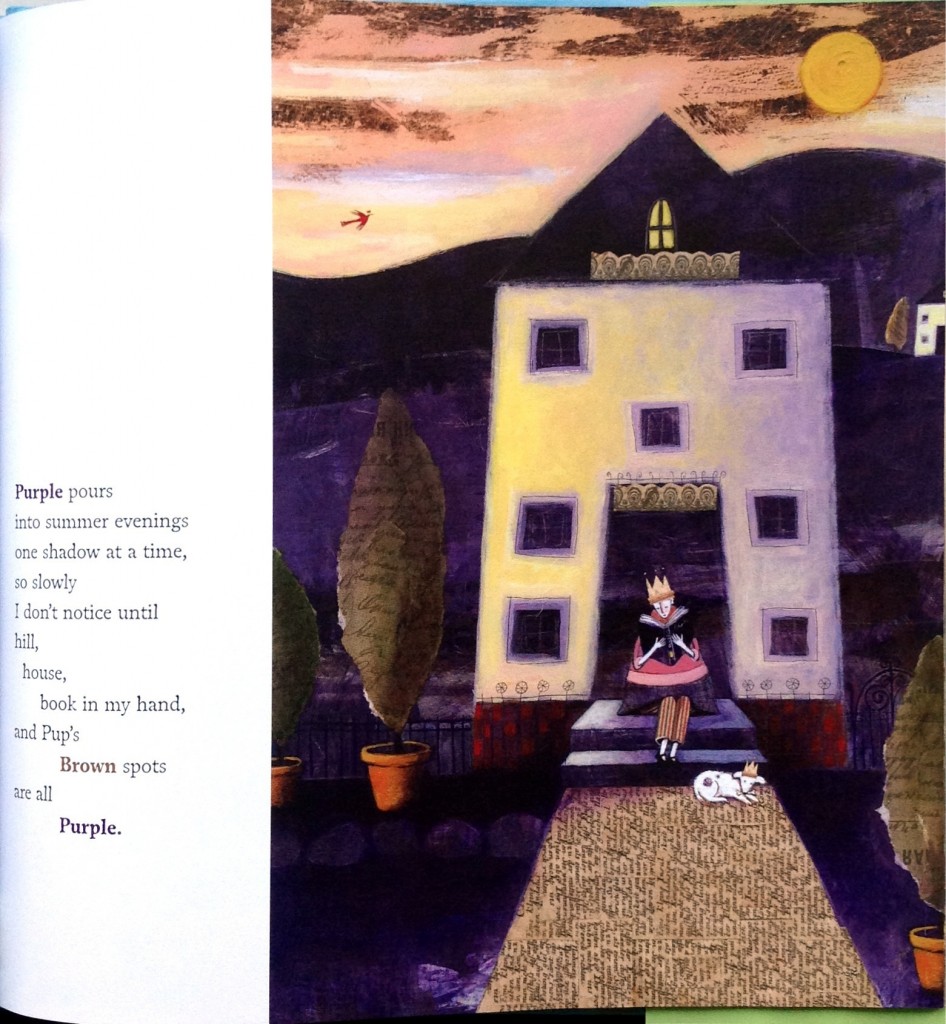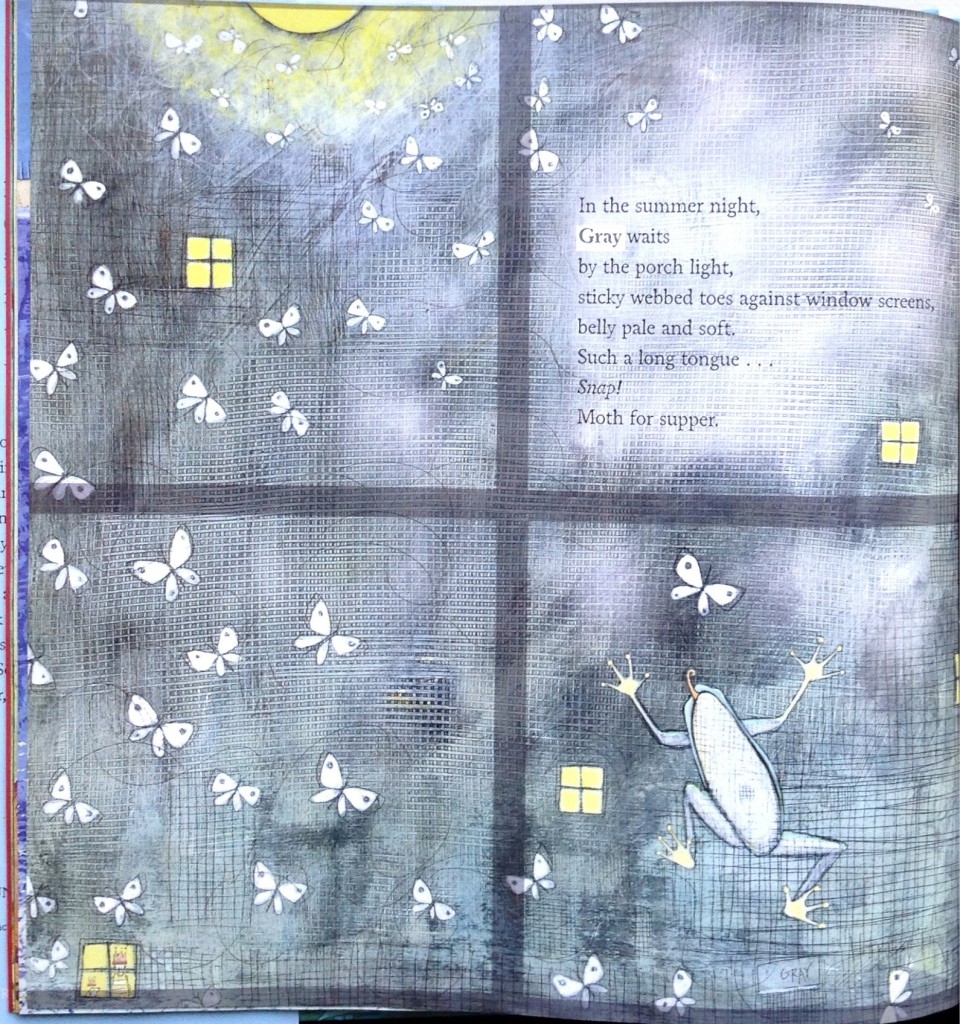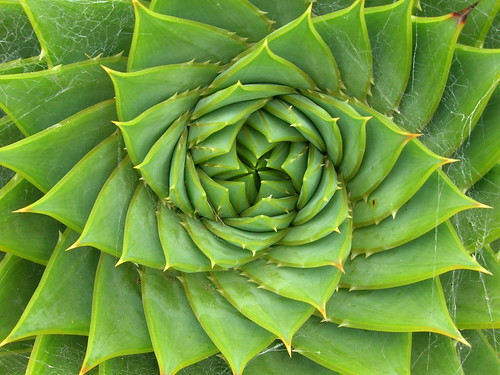The year ended. I packed up my room for a move to fifth grade and am just now back from a trip to Chile (more about that later). Finally, after all of that I have a bit of time to think back on the end of the school year and to celebrate some awesome poetry that the kids wrote this year.
I was impressed with the level of observation that the children brought to their poetry writing. For instance, these poems came from a photo prompt (taken from the National Geographic photo archive) that captured a lightning strike on the prairie.
G’s:

And J’s:

What impressed me about these poems was not just the way the children tried to capture the dramatic image of the lightning, but the way they tried to work that image into something larger (a mood or feeling) that the image helped to generate. G’s poem became a meditation, using repetition and a really cool comparative device that I don’t have a name for (“Vikings say…”, “Greeks say…”, “But I say…”) I was struck by how contemplative and quiet G’s poem was.
J’s poem, on the other hand, dropped the reader right into the drama of the photograph through superb word choice and the use of personification. (I really do love her imagination. Wow. She’s a good poet already at just ten years old.)
Other poems emerged from a couple of trips we took to the creek that runs behind our school. Sure the creek is controlled and channeled (as is too much of school, frankly), but we practiced watching and waiting and noticing all of the small creatures that seem to disrupt even the most controlled environment — spiders and ants, violets and bladder campion, minnows, scuds, and water striders. Heck, some kids even found the rolling, roiling movement of the sediment carried by the current, and the play of the sun off the water’s surface sufficiently inspiring to write about!
There’s a poem here, even in the darkness of that culvert.
L’s poems lingered, floating on the current…
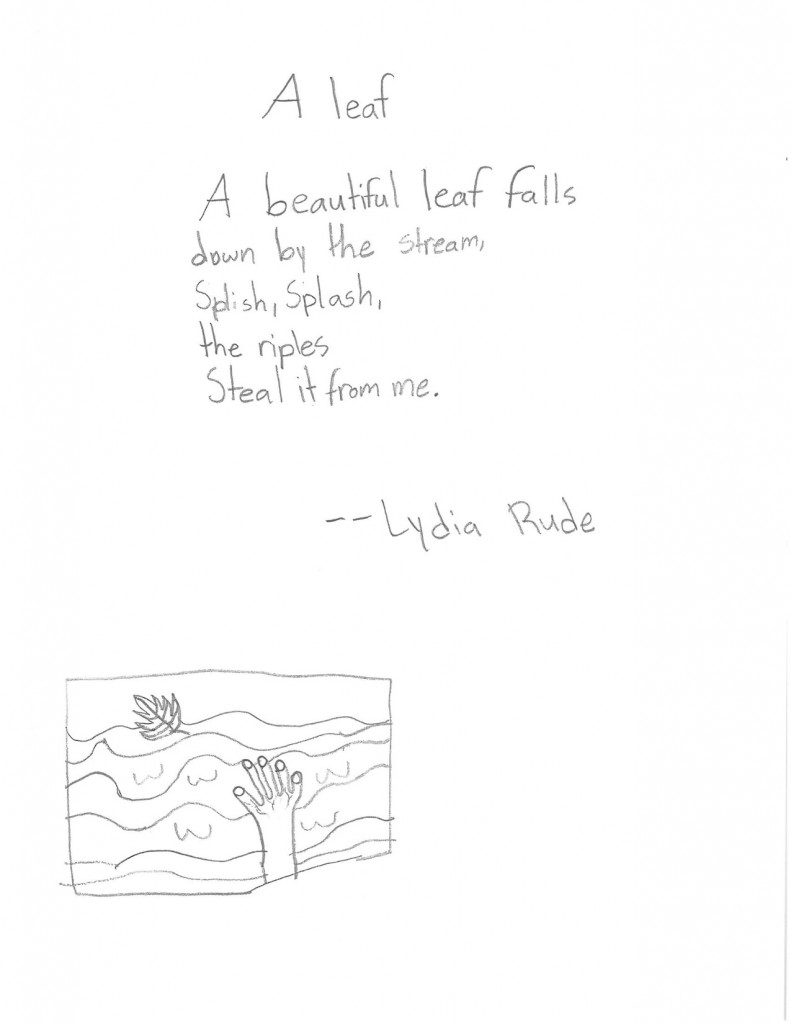
…to places far beyond our backyard. (Did knowing that the Japanese poet Issa wrote over 250 poems about frogs — and about 150 about dragonflies — help L. write at least two about the creek’s current?)
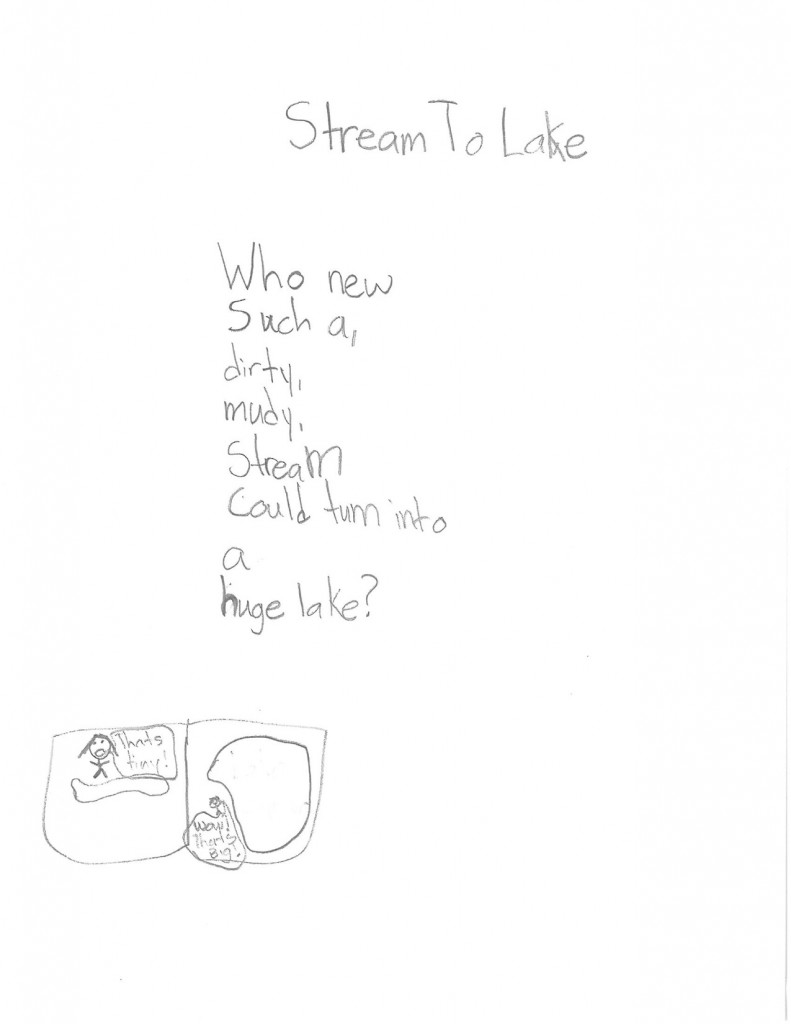
E.’s imaginary encounter — deer and wolf — happened during a moment of reverie near the creek.
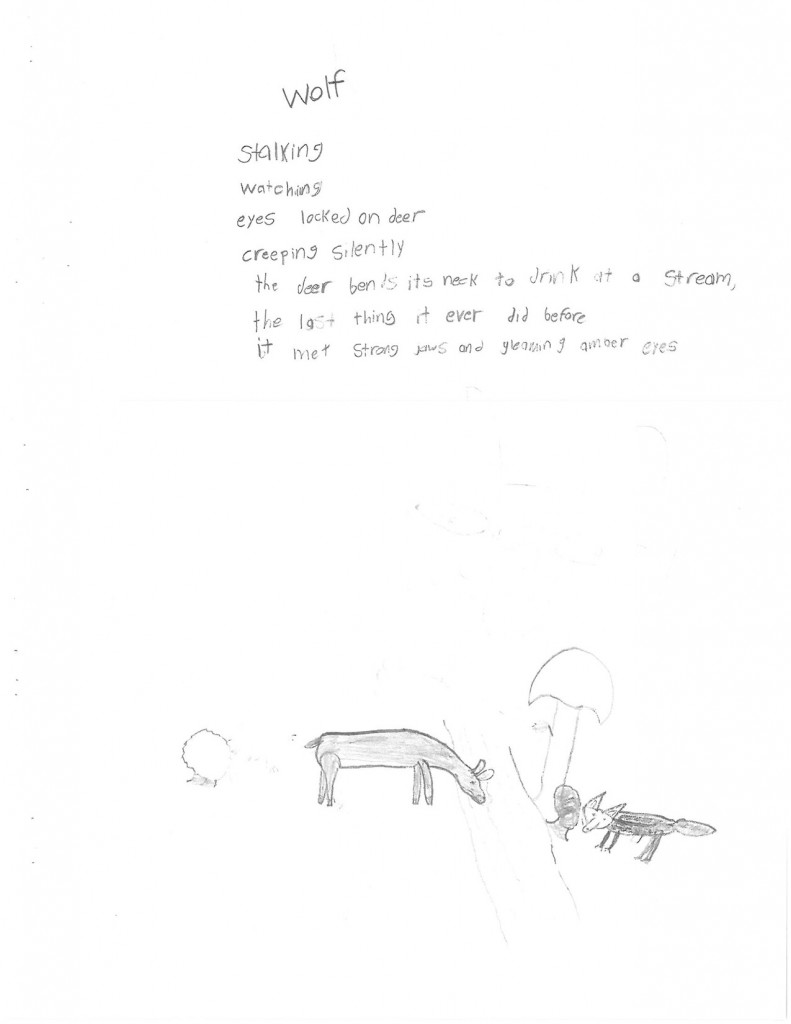
I was interested to see poems come from books we had read. Another of E’s poems, Dark, came at least in part from our read aloud, The Dark, by Lemony Snickett. Snickett’s personification of Darkness captured E’s imagination. But E. did the rest, building tension by varying his line breaks and choosing words to heighten the drama for the encounter between Darkness and Light.

Other poems came from objects the children and I brought in to school. A robin’s egg that I found on the path in the woods behind our house became inspiration for J’s haiku, which nailed the “twist” that haiku poets like to put in their poems.
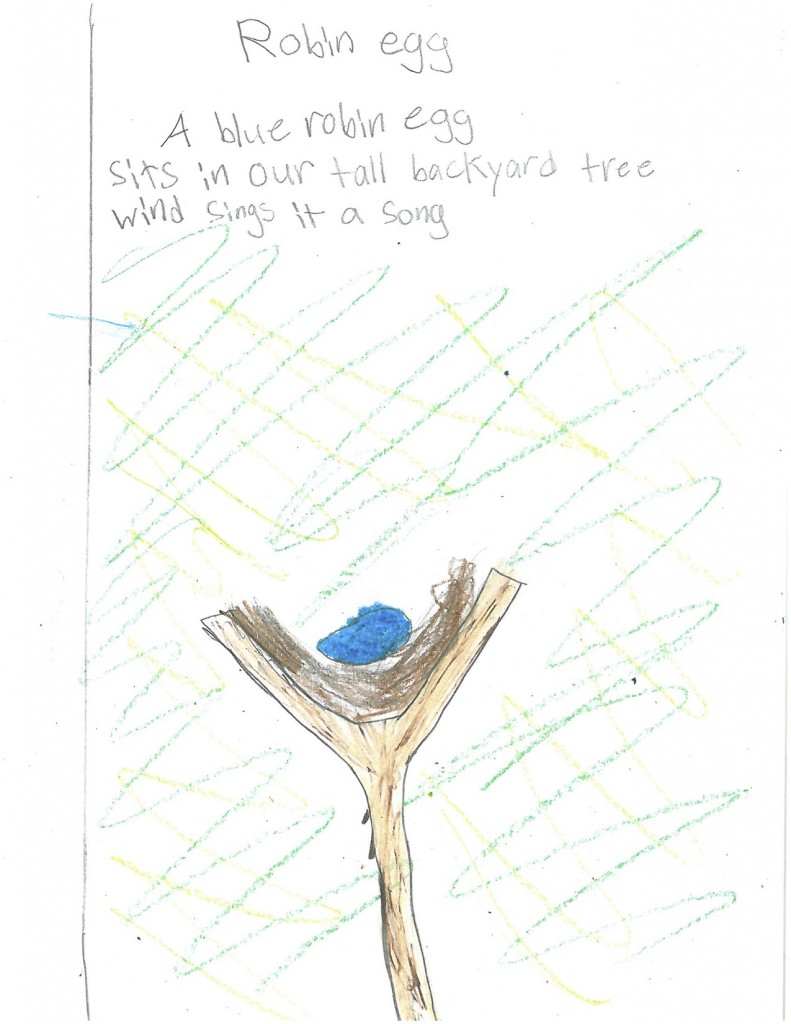
Still others found in poetry a way to connect with their funny side. A’s dry sense of humor shines through in this pet store poem that uses questions, repetition, and the blank spaces between thoughts to communicate ideas beyond the words on the paper.

Or J, again, with her love of cats. I love that last line (“fierce master of stripes”) and the first image, too. That “needle in a haystack” image came from her knowing that tiger stripes allow for good sneaking in tall grass.
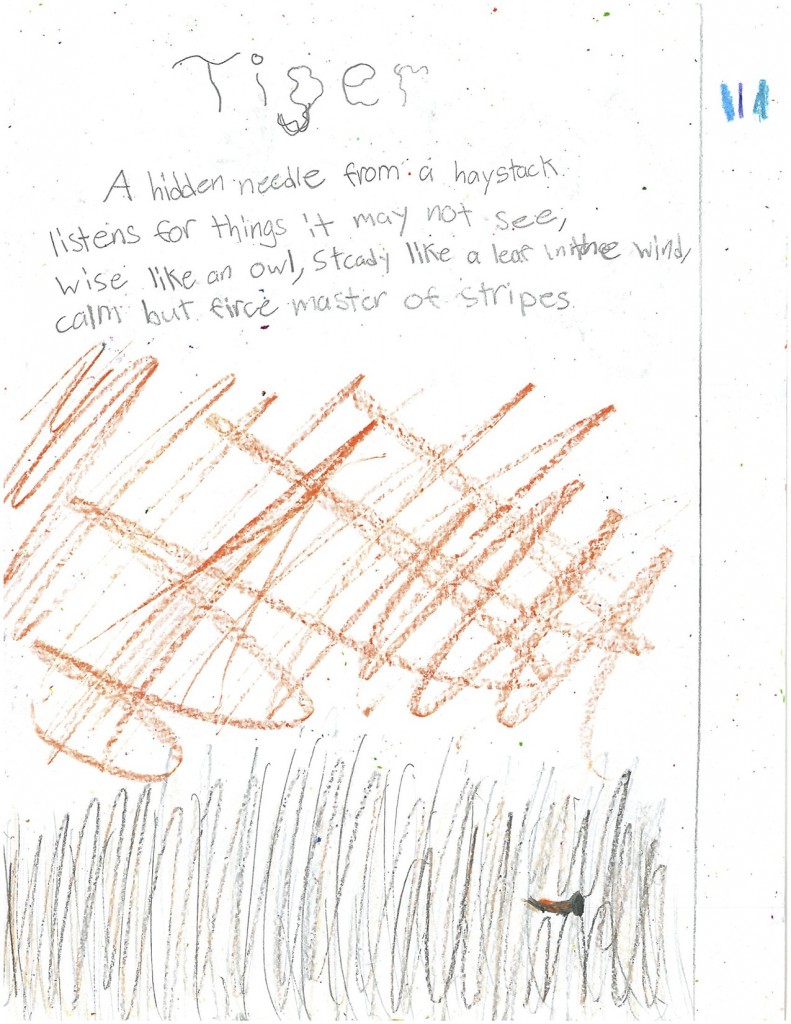
So, what worked this year? I haven’t always gotten such good poems.
First, and mostly, the kids seemed open to the task. Maybe that’s because, at fourth grade, they are a bit older than I’m used to teaching. Surely that extra part of a year helped them experience how language has literal and figurative components.
Second, I resisted giving the children “forms” to write from. In the past as the children begin to bog down in their poetry writing, I would offer them mentor texts that have more of a formula for how to write a poem of that kind (for instance, W.C. William’s “This is just to say…”) or I would send them to some websites that offer a chance to write poems in a certain form for the kids to print them out. However, this year the only form I gave them was haiku (and that wasn’t really much of a form since I didn’t insist they follow a 5-7-5 format) and a lot of poems by authors like Valerie Worth, Joyce Sidman, and Laura Purdie Salas. I chose these poems because they looked at common ordinary things in ways that transformed them into the extraordinary.
Third, I spent the better part of March writing poems of my own using Ted Kooser’s Winter Morning Walks and Tom Hennen’s Darkness Sticks to Everything as mentors. My goal was to pick an image a day, describe it, and see where the image brought me. I like Kooser’s and Hennen’s poetry because they are image based. Yet they use that deceivingly simple image as a window into something deeper, perhaps grander. Of course, I read the children selected poems of mine, including ones that I posted on this teacher blog. Some of my courage to resist giving the children formulaic poetry this year came directly from my experience writing from images myself. I knew they could push through to something interesting because, well, I had done that earlier.
Finally, throughout the year I tried to develop an awareness in the children of what the phrase “seeing slowly” might mean. Early in the year we developed a model for how we learn; noticing and thinking were central to that model. When it came time to write poetry, we already had a good sense of what it might look and feel like to slow down a bit and notice the world around us. We had practiced it in our reading, our writing, our talking and our listening. Maybe that attention to paying attention had something to do with the poetry that emerged at the end of the year.
I am happy that summer is here so I have a bit more time to think and write and just be in this big ol’ world. But when school starts up again, I will try to take what I learned about poetry and seeing and slowing down as I begin a new year in fifth grade next year.
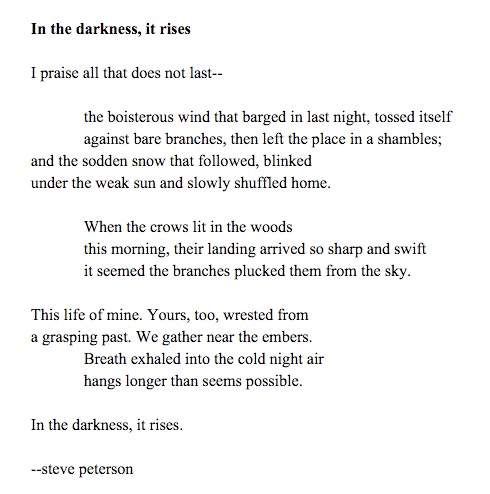



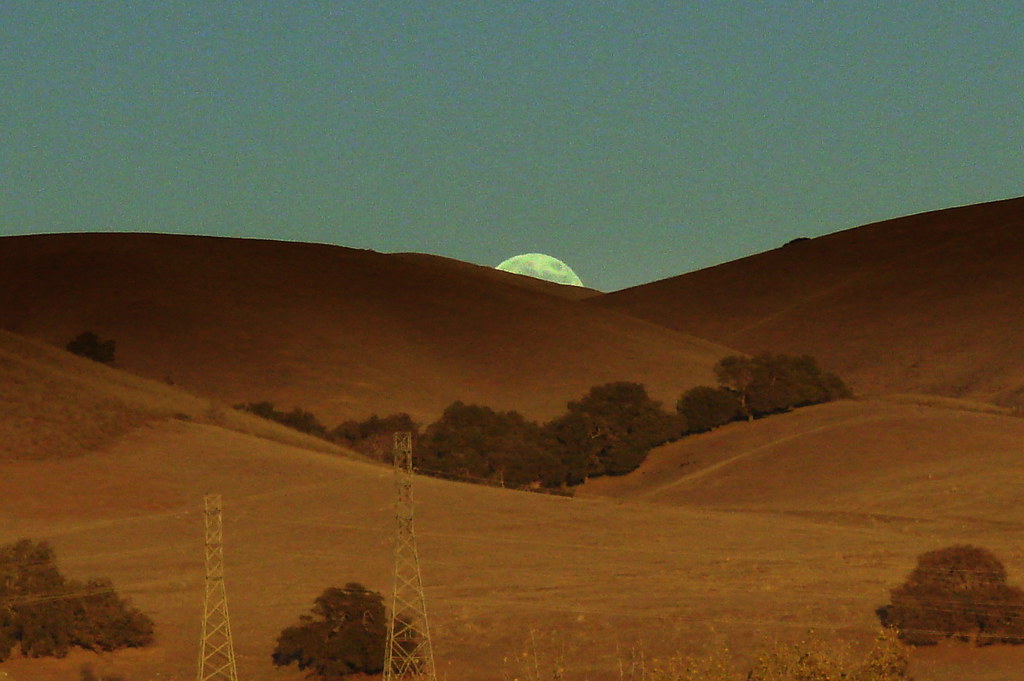
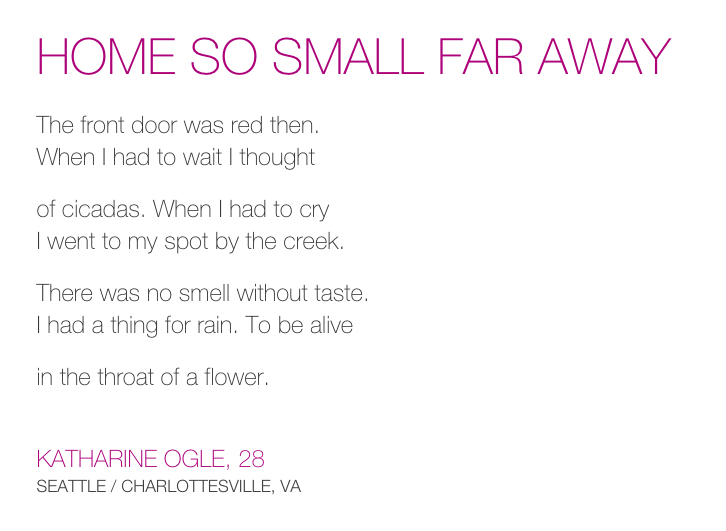





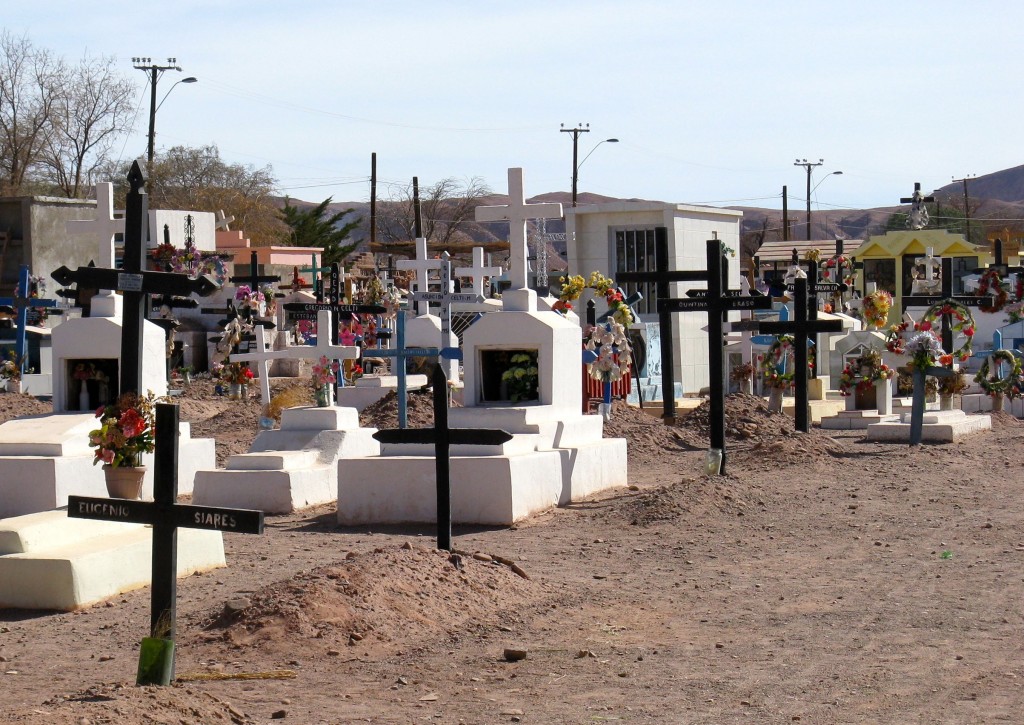
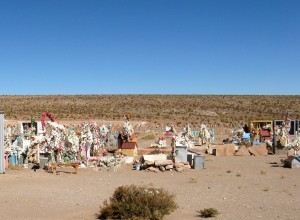 Paper Flowers
Paper Flowers